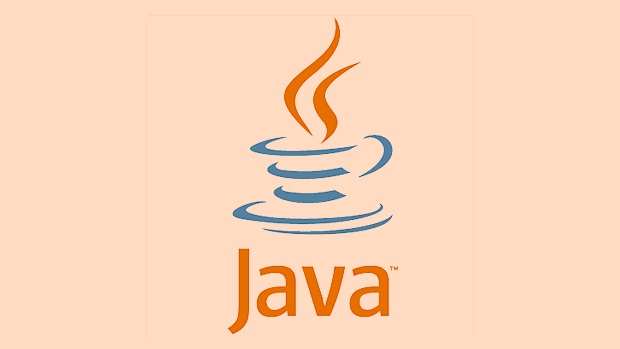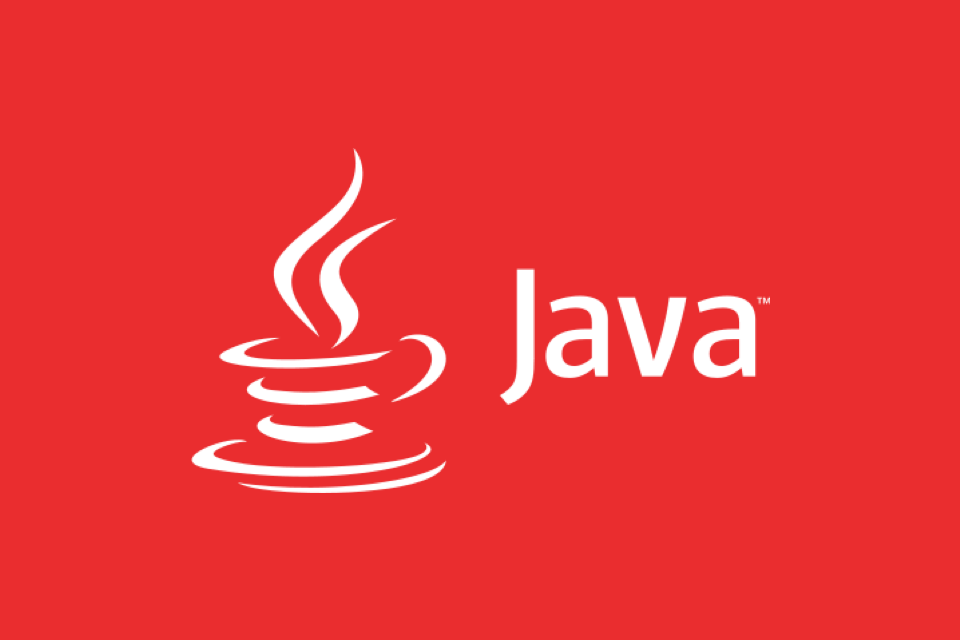A Comprehensive Guide to the Java Stream API
Java Stream API provides a declarative, functional approach to process data sequences without modifying the source. 2. Streams are created from collections, arrays, or using Stream.of() and support infinite streams via iterate() or generate(). 3. Intermediate operations like filter, map, and sorted are lazy and return new streams, while terminal operations like forEach, collect, and count trigger execution. 4. The collect() method gathers results into collections or summaries using built-in collectors such as toList, groupingBy, and partitioningBy. 5. flatMap flattens nested structures like List> into a single stream. 6. Operations like findFirst return Optional to safely handle absence of values. 7. Parallel streams via parallelStream() enable concurrent processing for large datasets but require caution regarding shared state and overhead. 8. Best practices include avoiding side effects, not reusing streams, and using streams only when beneficial over simple loops. 9. Streams should be avoided for performance-critical loops, indexed access, or overly complex logic. 10. The Stream API promotes cleaner, more maintainable code for filtering, transformation, and aggregation in modern Java development.

The Java Stream API, introduced in Java 8, revolutionized how developers process collections of data. It brings a functional programming style to Java, allowing for concise, readable, and often more efficient data processing. If you've ever written loops to filter, transform, or aggregate data from a list, the Stream API can make your code cleaner and less error-prone.

Let’s break down the Stream API in a practical, comprehensive way — from basics to advanced usage.
What Is a Stream?
A Stream is not a data structure. It doesn’t store elements. Instead, it’s a sequence of elements from a source (like a collection, array, or I/O channel) that supports functional-style operations such as map, filter, and reduce.

Key characteristics:
- Doesn’t modify the original data source — operations are non-destructive.
- Supports lazy evaluation — intermediate operations are not executed until a terminal operation is called.
- Can be processed in parallel — with minimal code changes.
List<String> names = Arrays.asList("Alice", "Bob", "Charlie");
names.stream()
.filter(name -> name.startsWith("A"))
.map(String::toUpperCase)
.forEach(System.out::println);
// Output: ALICECreating Streams
You can create a stream in several ways:

From Collections
List<String> list = Arrays.asList("a", "b", "c");
Stream<String> stream = list.stream();From Arrays
String[] array = {"a", "b", "c"};
Stream<String> stream = Arrays.stream(array);Using Stream.of()
Stream<String> stream = Stream.of("a", "b", "c");Infinite Streams
Use Stream.iterate() or Stream.generate() for infinite sequences.
Stream<Integer> infinite = Stream.iterate(0, n -> n 2); // 0, 2, 4, 6... Stream<Double> randoms = Stream.generate(Math::random);
⚠️ Be careful — infinite streams need a terminal operation that limits processing (e.g.,
limit()).
Intermediate vs Terminal Operations
Streams use a pipeline of operations:
- Intermediate operations return a new stream (they are lazy).
- Terminal operations trigger actual processing and return a result or side effect.
Common Intermediate Operations
filter(Predicate<T>): Keep elements matching a condition.map(Function<T,R>): Transform each element.flatMap(Function<T, Stream<R>>)`: Flatten nested structures.distinct(): Remove duplicates.sorted(): Sort elements.limit(n): Take firstnelements.skip(n): Skip firstnelements.
Example:
List<String> result = words.stream()
.filter(w -> w.length() > 3)
.map(String::toUpperCase)
.sorted()
.limit(10)
.collect(Collectors.toList());Common Terminal Operations
forEach(Consumer<T>): Perform action on each element.collect(Collector): Gather results into a list, set, map, etc.count(): Return number of elements.findFirst(): Return first element (asOptional).anyMatch(),allMatch(),noneMatch(): Check conditions.reduce(): Combine elements into a single value.
Collecting Results with collect()
The collect() method is one of the most powerful terminal operations. It’s used to accumulate stream elements into collections or summaries.
Common collectors from Collectors:
| Collector | Purpose |
|---|---|
toList() | Collect to List |
toSet() | Collect to Set |
joining() | Concatenate strings |
groupingBy() | Group by a classifier |
partitioningBy() | Split into true/false groups |
summingInt(), averagingDouble() | Aggregation |
mapping() | Apply function during collection |
Examples:
// Join names with comma
String names = people.stream()
.map(Person::getName)
.collect(Collectors.joining(", "));
// Group by age
Map<Integer, List<Person>> byAge = people.stream()
.collect(Collectors.groupingBy(Person::getAge));
// Partition adults vs minors
Map<Boolean, List<Person>> adults = people.stream()
.collect(Collectors.partitioningBy(p -> p.getAge() >= 18));Flattening Streams with flatMap
When you have nested structures (e.g., List<List<String>>), flatMap helps flatten them.
List<List<String>> listOfLists = Arrays.asList(
Arrays.asList("a", "b"),
Arrays.asList("c", "d")
);
List<String> flat = listOfLists.stream()
.flatMap(List::stream)
.collect(Collectors.toList()); // ["a", "b", "c", "d"]Another common use: extract values from objects.
List<String> allTags = posts.stream()
.flatMap(post -> post.getTags().stream())
.distinct()
.collect(Collectors.toList());Handling Optional Results
Some terminal operations return Optional<T> to avoid null issues.
Optional<String> first = words.stream()
.filter(w -> w.startsWith("Q"))
.findFirst();
if (first.isPresent()) {
System.out.println(first.get());
}
// Or better:
first.ifPresent(System.out::println);Common methods:
isPresent()ifPresent(Consumer)orElse(T)orElseGet(Supplier)orElseThrow()
Parallel Streams
Streams can be processed in parallel using parallelStream() or .parallel().
int sum = numbers.parallelStream()
.mapToInt(Integer::intValue)
.sum();When to use:
- Large datasets
- CPU-intensive operations
- Independent elements (no shared state)
⚠️ Caveats:
- Not always faster — overhead matters for small data.
- Avoid shared mutable state (e.g., updating a global list inside
forEach). - Order may not be preserved unless you use
forEachOrdered().
Best Practices and Pitfalls
Here are some real-world tips:
- ✅ Prefer streams over loops for filtering, mapping, reducing.
- ✅ Keep lambda expressions simple — extract to methods if complex.
- ✅ Use lazy evaluation to your advantage — intermediate ops don’t run until terminal op.
- ❌ Don’t reuse streams — they’re single-use. Create a new one if needed.
- ❌ Avoid side effects in stream operations (e.g., modifying external variables).
- ❌ Don’t overuse parallel streams without measuring performance.
Example of side effect to avoid:
List<String> result = new ArrayList<>();
words.stream()
.filter(w -> w.length() > 3)
.forEach(result::add); // Bad: side effect in forEachInstead:
List<String> result = words.stream()
.filter(w -> w.length() > 3)
.collect(Collectors.toList()); // GoodWhen Not to Use Streams
While powerful, streams aren’t always the best choice:
- Simple loops (e.g., just printing all elements).
- Performance-critical tight loops (streams have overhead).
- Complex logic that becomes unreadable in a pipeline.
- When you need indexed access (streams don’t expose indices directly).
For indexed access, consider:
IntStream.range(0, list.size())
.forEach(i -> System.out.println(i ": " list.get(i)));Summary
The Java Stream API gives you a declarative way to work with data sequences. It promotes immutability, composability, and cleaner code — especially when dealing with filtering, transformation, and aggregation.
Key takeaways:
- Streams are lazy, non-mutating, and composable.
- Use intermediate operations to build pipelines.
- End with a terminal operation to trigger execution.
- Leverage
collect()for flexible result gathering. - Use
parallelStream()wisely. - Avoid side effects and shared state.
Used well, the Stream API makes your code more expressive and less bug-prone. It’s a core part of modern Java development.
Basically, if you're still writing manual loops for filtering or mapping, it's time to give streams a try.
The above is the detailed content of A Comprehensive Guide to the Java Stream API. For more information, please follow other related articles on the PHP Chinese website!

Hot AI Tools

Undress AI Tool
Undress images for free

Undresser.AI Undress
AI-powered app for creating realistic nude photos

AI Clothes Remover
Online AI tool for removing clothes from photos.

Clothoff.io
AI clothes remover

Video Face Swap
Swap faces in any video effortlessly with our completely free AI face swap tool!

Hot Article

Hot Tools

Notepad++7.3.1
Easy-to-use and free code editor

SublimeText3 Chinese version
Chinese version, very easy to use

Zend Studio 13.0.1
Powerful PHP integrated development environment

Dreamweaver CS6
Visual web development tools

SublimeText3 Mac version
God-level code editing software (SublimeText3)
 VSCode settings.json location
Aug 01, 2025 am 06:12 AM
VSCode settings.json location
Aug 01, 2025 am 06:12 AM
The settings.json file is located in the user-level or workspace-level path and is used to customize VSCode settings. 1. User-level path: Windows is C:\Users\\AppData\Roaming\Code\User\settings.json, macOS is /Users//Library/ApplicationSupport/Code/User/settings.json, Linux is /home//.config/Code/User/settings.json; 2. Workspace-level path: .vscode/settings in the project root directory
 Volume keys on keyboard not working
Aug 05, 2025 pm 01:54 PM
Volume keys on keyboard not working
Aug 05, 2025 pm 01:54 PM
First,checkiftheFnkeysettingisinterferingbytryingboththevolumekeyaloneandFn volumekey,thentoggleFnLockwithFn Escifavailable.2.EnterBIOS/UEFIduringbootandenablefunctionkeysordisableHotkeyModetoensurevolumekeysarerecognized.3.Updateorreinstallaudiodriv
 python itertools combinations example
Jul 31, 2025 am 09:53 AM
python itertools combinations example
Jul 31, 2025 am 09:53 AM
itertools.combinations is used to generate all non-repetitive combinations (order irrelevant) that selects a specified number of elements from the iterable object. Its usage includes: 1. Select 2 element combinations from the list, such as ('A','B'), ('A','C'), etc., to avoid repeated order; 2. Take 3 character combinations of strings, such as "abc" and "abd", which are suitable for subsequence generation; 3. Find the combinations where the sum of two numbers is equal to the target value, such as 1 5=6, simplify the double loop logic; the difference between combinations and arrangement lies in whether the order is important, combinations regard AB and BA as the same, while permutations are regarded as different;
 go by example http middleware logging example
Aug 03, 2025 am 11:35 AM
go by example http middleware logging example
Aug 03, 2025 am 11:35 AM
HTTP log middleware in Go can record request methods, paths, client IP and time-consuming. 1. Use http.HandlerFunc to wrap the processor, 2. Record the start time and end time before and after calling next.ServeHTTP, 3. Get the real client IP through r.RemoteAddr and X-Forwarded-For headers, 4. Use log.Printf to output request logs, 5. Apply the middleware to ServeMux to implement global logging. The complete sample code has been verified to run and is suitable for starting a small and medium-sized project. The extension suggestions include capturing status codes, supporting JSON logs and request ID tracking.
 Python for Data Engineering ETL
Aug 02, 2025 am 08:48 AM
Python for Data Engineering ETL
Aug 02, 2025 am 08:48 AM
Python is an efficient tool to implement ETL processes. 1. Data extraction: Data can be extracted from databases, APIs, files and other sources through pandas, sqlalchemy, requests and other libraries; 2. Data conversion: Use pandas for cleaning, type conversion, association, aggregation and other operations to ensure data quality and optimize performance; 3. Data loading: Use pandas' to_sql method or cloud platform SDK to write data to the target system, pay attention to writing methods and batch processing; 4. Tool recommendations: Airflow, Dagster, Prefect are used for process scheduling and management, combining log alarms and virtual environments to improve stability and maintainability.
 edge pdf viewer not working
Aug 07, 2025 pm 04:36 PM
edge pdf viewer not working
Aug 07, 2025 pm 04:36 PM
TestthePDFinanotherapptodetermineiftheissueiswiththefileorEdge.2.Enablethebuilt-inPDFviewerbyturningoff"AlwaysopenPDFfilesexternally"and"DownloadPDFfiles"inEdgesettings.3.Clearbrowsingdataincludingcookiesandcachedfilestoresolveren
 Google Chrome cannot open local files
Aug 01, 2025 am 05:24 AM
Google Chrome cannot open local files
Aug 01, 2025 am 05:24 AM
ChromecanopenlocalfileslikeHTMLandPDFsbyusing"Openfile"ordraggingthemintothebrowser;ensuretheaddressstartswithfile:///;2.SecurityrestrictionsblockAJAX,localStorage,andcross-folderaccessonfile://;usealocalserverlikepython-mhttp.server8000tor
 python pytest fixture example
Jul 31, 2025 am 09:35 AM
python pytest fixture example
Jul 31, 2025 am 09:35 AM
fixture is a function used to provide preset environment or data for tests. 1. Use the @pytest.fixture decorator to define fixture; 2. Inject fixture in parameter form in the test function; 3. Execute setup before yield, and then teardown; 4. Control scope through scope parameters, such as function, module, etc.; 5. Place the shared fixture in conftest.py to achieve cross-file sharing, thereby improving the maintainability and reusability of tests.







